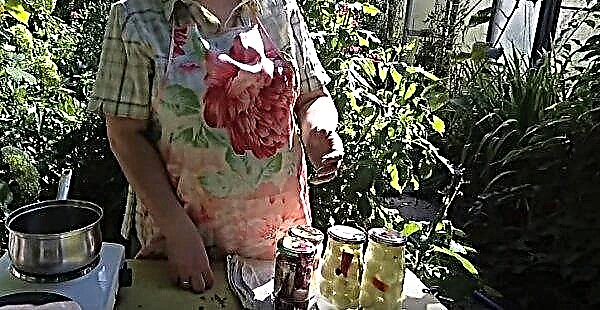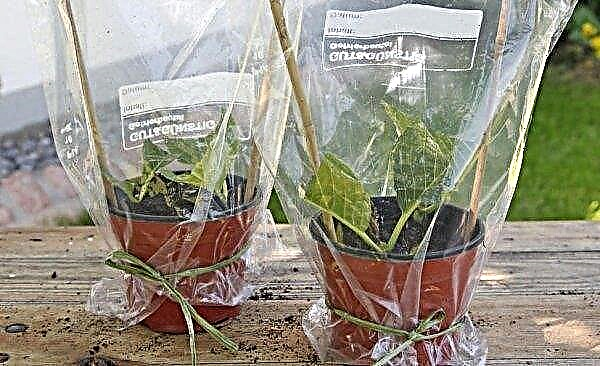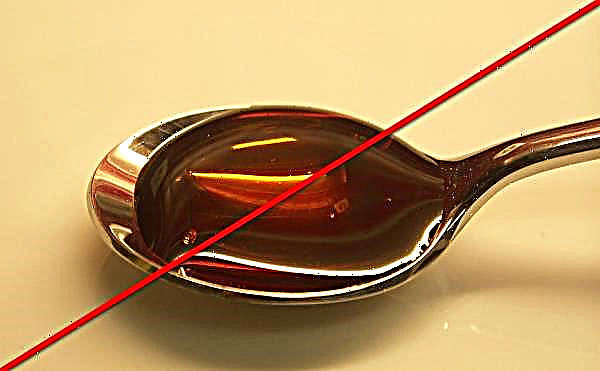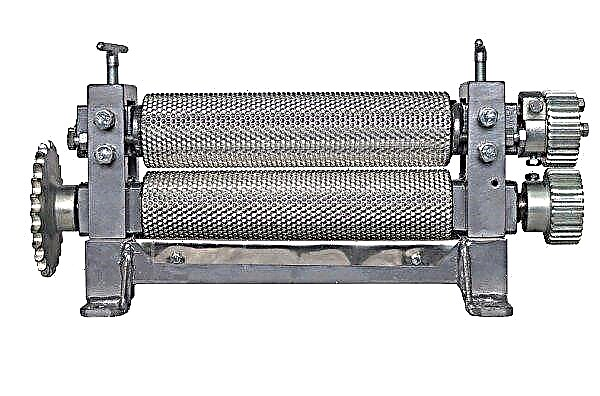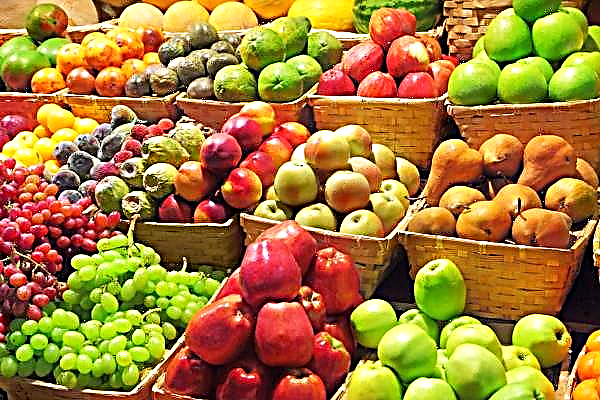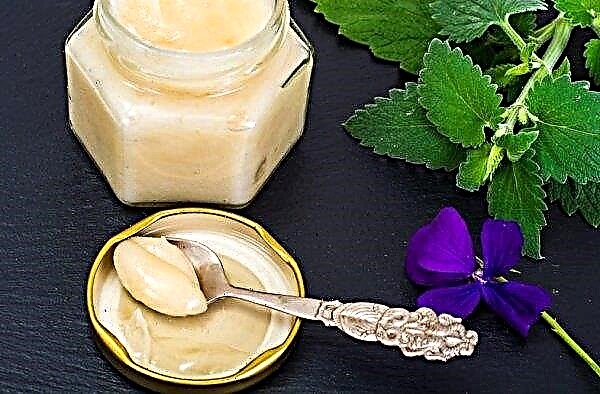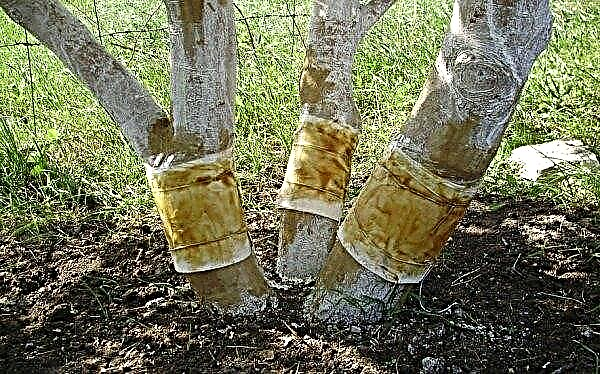Growing garden plants requires the farmer to take various methods to improve the soil, saturate the crops with nutrients. From this article you will learn about the sideration method using wheat, all the nuances of the process, the pros and cons.
What is siderat
To grow a full crop, the soil must be saturated with all the elements necessary for crops. The growth of seedlings is often prevented by weeds, taking away moisture and nutrition. The soil can be heavy, unsuitable for the qualitative development of plants. All these problems are solved by one method - sideration. This is one of the cheapest methods, in addition, it allows you to get an environmentally friendly, organic crop.

Siderata plants are crops that can quickly grow green mass. After ripening, green fertilizer is mowed and embedded in the soil.
- Decomposing, siderate changes the structure of the soil:
- Bandwidth improves.
- The upper layers retain moisture better.
- Due to the increased friability, the earth is saturated with oxygen.
- Soil erosion is restrained.
- Dense vegetation does not give a chance for the development of weeds.
- The content of minerals necessary for the growth of cultivated plants increases.
Did you know? For the production of low-calorie pasta, as well as couscous and pizza dough, durum durum wheat is used.
Features of spring and winter wheat
There are two types of wheat - spring and winter. The variety of culture selected for sideration will depend on weather conditions, the climate in the region and the desired result.
Spring wheat:
- It does not have such resistance to pests and weeds as winter.
- It develops poorly on acidic soils.
- Hard species need nutritious soil.
- It can be sown in winter, as seedlings hatch at + 2 ° C.
- During cultivation, the mind needs abundant watering.
- Spring wheat is not suitable for absolutely “wild” lands where nothing was previously grown.

Features of the winter species:
- Most suitable for land restoration in the southern regions and where the weather can change dramatically.
- It does not require intensive soil preparation before sowing.
- The percentage of winter seedlings is higher than that of spring crops.
- Sidereal winter crops have no effect if they are planted in spring: seedlings will be poor and weak.
- Do not plant species in regions with little rainfall in winter.
Did you know? Winter wheat varieties bred by Ukrainian breeders have been actively purchased from the mid-19th century for the USA, Canada, European and Scandinavian countries.
Growing with other crops
Wheat cereal is an ideal precursor for the bulk of plants in the garden.
After him, such crops are planted:
- solanaceous - tomato, tobacco, eggplant, pepper, potatoes;
- legumes - peas, asparagus, beans, beans, soy;
- cruciferous - all types of cabbage, turnip, radish, rutabaga, horseradish.

To improve the quality of sideration, apply a combined planting of wheat with other similar plants.
For instance:
- phacelia - has a strong immunity against fungi and viruses;
- lupine - saturates the soil with nitrogen, accelerates the growth of wheat;
- legumes - aerate and loosen the soil, saturate with nitrogen and oxygen;
- mustard - disinfects the earth from fungal spores, cleans pests.
Important! For a good spring wheat crop, the soil must be sufficiently moistened, otherwise the seedlings will die.
When is best to sow
Winter wheat is sown in autumn so that it goes through the vernalization stage during the winter. Under this condition, the culture will rise well and develop well.
The specific sowing date depends on the region:
- in warm climates, in the middle lane and in the south - the last decade of October, beginning of November;
- in cold conditions - early October.
 The spring appearance of the plant can be sown in spring and summer. The main condition for sowing is ground warmed up to + 2 ° C. Spring shoots sown in August or September before the first frosts manage to stretch 25 cm in height. They are usually either cut off and buried in the soil, or simply left on the surface for decay.
The spring appearance of the plant can be sown in spring and summer. The main condition for sowing is ground warmed up to + 2 ° C. Spring shoots sown in August or September before the first frosts manage to stretch 25 cm in height. They are usually either cut off and buried in the soil, or simply left on the surface for decay.
Features of the sideration process
To improve the condition of the soil, its saturation with nutrients, it is important to correctly conduct sideration.
Important! Colina — these are the toxic elements that wheat releases into the soil to inhibit other plants. If you do not wait a certain period, cultural plantings will not rise, they will perish.
Recommendations of experienced farmers for wheat harvesting:
- To create high-quality humus, do not close up greens in the soil. As it grows, the root system of the plant creates a loose, aerated structure that is destroyed by digging. Most of the benefits of taking are lost.
- You need to cut the green mass before the formation of ears, otherwise the roots will draw nutrients from the soil to form grains. In addition, the yellowed stems are coarse, they need more time to decompose.
- For cutting, a plane cutter is used, part of the green mass is sent to a compost pit.
- To create saturated fertilizer, you need a lot of moisture. The mass distributed over the beds is watered, leaving for a couple of days. To speed up the decomposition process, cover with a thin layer of compost.
- Before planting cultivated plants after cereal green manure, an interval of 2 weeks is maintained. During this time, precipitation will wash the coline from the upper layers of the soil.
- Planting material is placed directly in the finished mulch.

Sowing process
Seeds of wheat, both spring and winter, need to be sown in prepared soil. The site is cleaned of plant debris, dug up and leveled with a rake. On average, 30–50 g of seeds will be needed for sowing per m². At home, planting material is etched in a solution of potassium permanganate.
The sowing depth is determined by the composition and structure of the soil:
- sandy and sandy loam - 7–10 cm;
- clay and loamy - 3-4 cm.
 In dense soil, the sprouts can die without having made their way to the surface, so the sowing depth is important. After 3-5 days, the surface of the plot is rolled up and watered if necessary. Shoots appear after 9-12 days.
In dense soil, the sprouts can die without having made their way to the surface, so the sowing depth is important. After 3-5 days, the surface of the plot is rolled up and watered if necessary. Shoots appear after 9-12 days.
Seedling Care
Since we are not talking about a grain crop, but only about a good green mass, caring for the crop is minimal. Watering is carried out during dry periods, in the absence of precipitation. It is necessary in the phase of active vegetation to inspect crops for diseases and pests.
Wheat can be affected by such misfortunes:
- pests - bread bugs, grain scoop and fly;
- diseases - rust, powdery mildew, root rot.
If problems are noticed, carry out the treatment using special preparations:
- Agravertin is used against scoops, flies and beetles. The working solution is prepared in a ratio of 6-8 ml / 1 liter of water. For spraying 100 m², 1 liter is enough.
- Allirin-B is an effective drug with a wide spectrum of action; it copes with rot and other fungal infections. For spraying, prepare a solution in the ratio of 2 tablets / 1 liter of water.

Advantages and disadvantages of wheat as siderate
Wheat is not often used in green manure, as it is suitable for fertilizing already cultivated lands.
- The disadvantages of cereal:
- Not suitable as siderate for podzolic soils.
- Not suitable on lands where outbreaks of fungal diseases are noticed, unlike mustard.
- Do not scare away the larvae of beetles, like white clover.
At the same time, cereals can perfectly improve clogged, heavy and scarce land.
- Details about the advantages:
- The root system deeply loosens the soil.
- Decaying green mass saturates the soil with nitrogen, potassium and phosphorus.
- Greens perfectly go not only to the soil, but also to livestock feed.
- Straw can be used as bedding for farm animals.
- Part of the stems after cutting is laid in a compost pit.

Thus, with the help of wheat as siderate, weeds and fungi are eliminated, as well as pests in the garden. With the help of the event they improve the structure and quality of the soil, increasing the yield.

